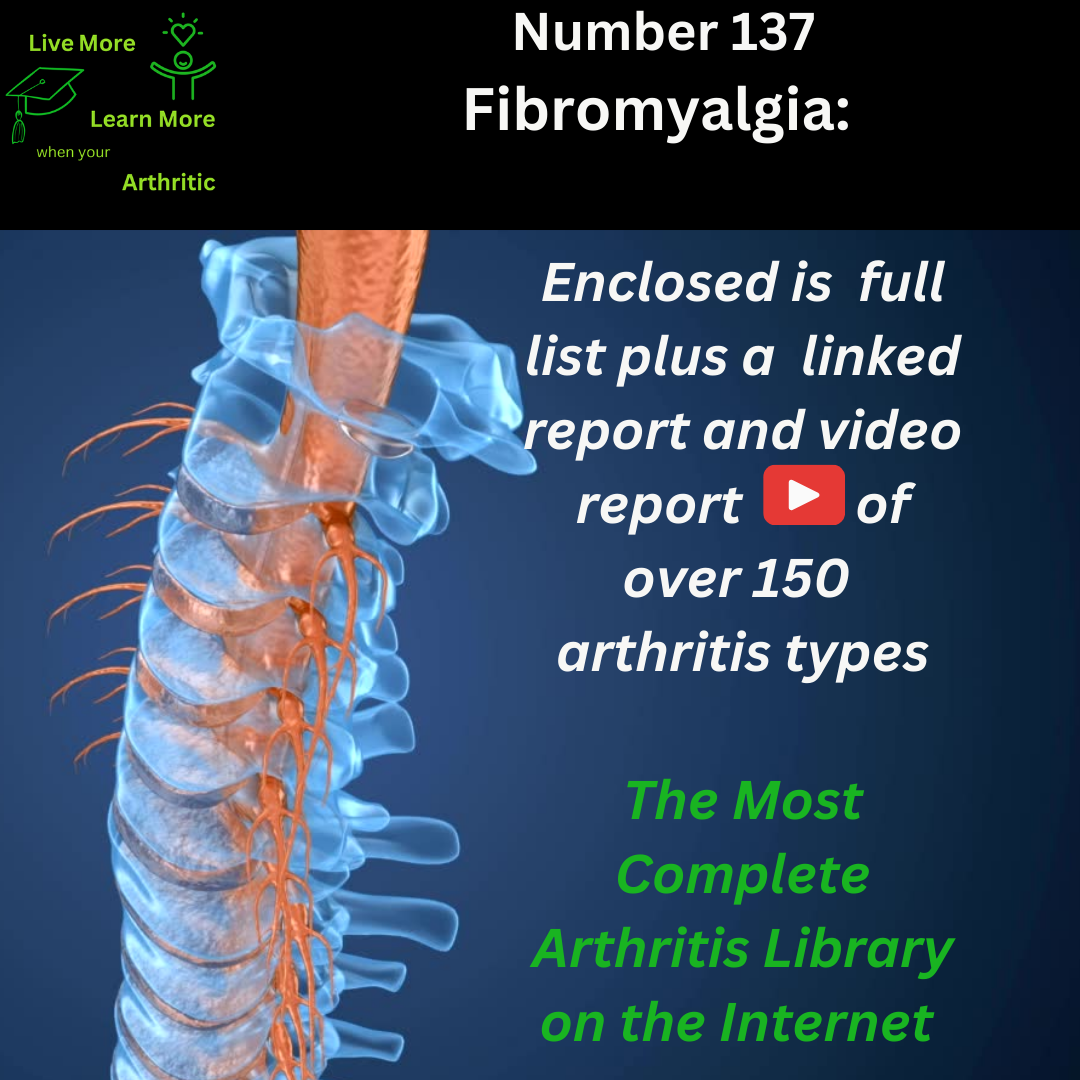
Fibromyalgia: 137 of around 150 types of Arthritis
Navigating Fibromyalgia: Unraveling the Puzzle of Chronic Pain
Fibromyalgia is a complex and often misunderstood condition that affects various parts of the body, primarily targeting muscles and joints. The most commonly affected areas include the neck, shoulders, back, and hips. This widespread pain can be debilitating, leading to stiffness and reduced mobility.
 Nature of Remission and Disease Description
Nature of Remission and Disease Description
Remission in fibromyalgia is possible but can be challenging to achieve and maintain. It often requires a holistic approach involving lifestyle modifications, stress management, and therapeutic interventions. Fibromyalgia is characterized by chronic widespread pain, often accompanied by fatigue, sleep disturbances, and cognitive difficulties (often referred to as “fibro fog”).
Causes, Triggers, and Age of Onset
The exact cause of fibromyalgia is not fully understood, but it’s believed to involve a combination of genetic, neurobiological, and environmental factors. Common triggers include physical or emotional trauma, infections, and hormonal changes. Fibromyalgia can develop at any age, but it’s most commonly diagnosed between 30 to 60 years old.
Impact on Lifespan and Autoimmune Connection
Fibromyalgia is not considered a form of arthritis, as it primarily affects soft tissues rather than joints themselves. While it doesn’t typically shorten lifespan, it can significantly impact quality of life and daily functioning due to chronic pain and associated symptoms.
Risk Factors and Complications
Risk factors for fibromyalgia include family history, gender (women are more commonly affected), and certain chronic illnesses like rheumatoid arthritis or lupus. Complications can include depression, anxiety, sleep disorders, and decreased physical activity due to pain and fatigue.
Understanding Inflammation and Joint Tenderness
In fibromyalgia, inflammation and swelling are not prominent features as seen in autoimmune arthritis. Instead, the pain arises from abnormal processing of pain signals in the central nervous system, leading to heightened sensitivity to stimuli. Joint tenderness is a hallmark symptom, believed to be related to increased pain sensitivity in fibromyalgia.
Impact on Range of Motion and Cartilage
While fibromyalgia does not directly affect cartilage or cause structural joint damage, it can lead to stiffness and reduced range of motion due to muscle tightness and pain. Lack of regular physical activity can exacerbate these symptoms over time.
Lifestyle and Proactive Management
Achieving a higher quality of life with fibromyalgia requires a proactive and multifaceted approach. This includes regular exercise (adapted to individual capabilities), stress reduction techniques (such as mindfulness or yoga), adequate sleep hygiene, and maintaining a balanced diet. Cognitive-behavioral therapy (CBT) and other forms of counseling can also be beneficial in managing symptoms and improving coping strategies.
 Complications and Common Age of Onset
Complications and Common Age of Onset
Possible complications of fibromyalgia extend beyond physical symptoms and can include social isolation, impaired work productivity, and reduced overall well-being. Fibromyalgia commonly affects women more than men, with a prevalence ratio of about 4:1. While fibromyalgia can coexist with other conditions like irritable bowel syndrome (IBS) or chronic fatigue syndrome (CFS), it’s essential to address each condition separately to optimize management and treatment outcomes.
In conclusion, understanding fibromyalgia involves unraveling the complex interplay of biological and psychosocial factors that contribute to chronic pain and associated symptoms. By adopting a proactive approach focused on self-care, symptom management, and targeted interventions, individuals with fibromyalgia can improve their quality of life and regain a sense of control over their health and well-being.

